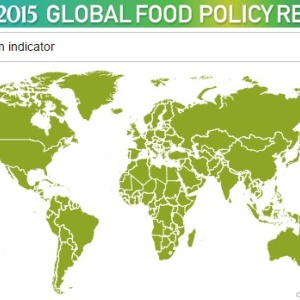
In this report IFPRI describes the major food policy issues, developments, and decisions of 2014 and highlights challenges and opportunities for 2015.
The report calls on global institutions, the private sector, and citizens of middle income countries to reshape food systems to focus on nutrition and health, close the gender gap in agriculture, and improve rural infrastructure-particularly sanitation – in order to ensure food security for all. By addressing hunger and malnutrition within their own borders, middle income countries can not only significantly improve global food and nutrition security but also serve as models for low income countries. The report also presents data for several key food policy indicators, including country-level data on hunger, agricultural research spending, and food policy research capacity. In addition to illustrative figures, tables, and a timeline of food policy events during the past year, the report also presents the results of a global opinion poll on the current state of food policy.
The report’s key observations are:
- Improved sanitation can be critical to shaping key nutrition outcomes, especially for children;
- Supporting the world’s 1.5 billion small farmers to move up to higher-value agriculture or move out of agriculture is essential;
- Social protection and the reduction of vulnerability are back on the development agenda, as shocks continue to challenge developing countries;
- A series of high-profile food-related scares has drawn attention to the issue of food safety and other health risks associated with agriculture;
- Conflicts continue to threaten the livelihoods and nutrition security of producers and consumers in many regions; and
- Demand for fish is rapidly growing due to higher incomes and increased attention to nutrition.
Download the full report or the first chapter. An embeddable GFPR widget utilizing data from the Report is available here: this provides a variety of datasets generated by IFPRI researchers, including data on investments in agricultural research, public spending in agriculture, food policy research capacity, and agricultural total factor productivity, as well as a hunger index at the country level.







Post a new comment »